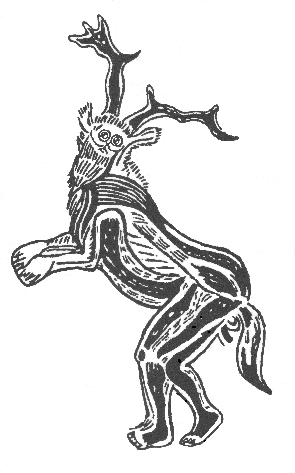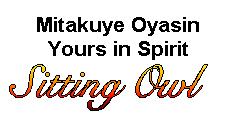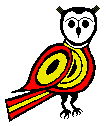|
Main
Menu
External
Pages
|
The Shamans of the Caves
Excerpt from: ‘The Way of the Animal Powers
– Historical Atlas of World Mythology’
By: Joseph Campbell

The Animal envoys of the Unseen Power no longer serve, as in primeval times,
to teach and to guide mankind. Bears, lions, elephants, ibexes, and gazelles are
in cages in zoos. Man is no longer the newcomer in a world of unexplored plains
and forests, and our immediate neighbours are not wild beasts but other human
beings, contending for goods and space on a planet that is whirling without end
around the fireball of a star. Neither in body nor in mind do we inhabit the
world of those hunting races of the Palaeolithic millennia, to whose lives and
life ways we nevertheless owe the very forms of our bodies and structure of our
minds.
Memories of their animal envoys still must sleep, somehow, within us; for they
wake a little and stir when we venture into the wilderness. They wake in terror
to thunder. And again they wake, with a sense of recognition, when we enter any
one of those great painted caves. What ever the inward darkness may have been to
which the shamans of those caves descended in their trances, the same must lie
within ourselves, nightly visited in sleep. Moreover, in parts of the world
marginal to contemporary civilisation, the beat of the shaman’s drum may still
be heard, transporting spirits in flight to regions known to our own visionaries
and to men and women gone mad. Did the shamans of those caves interpret their
visionary voyages as shamans do today – shamans whom we can visit and with
whom many of us have conversed? Our only evidence is the pictorial script in the
labyrinthine secrecy of the silent caves themselves. Why so deeply hidden and in
parts so difficult of access?…
Herbert Kuhn has descried his own visit to the great bell-shaped main chamber,
with its overhanging rocks and fissures, of the cave known as Les Trois Freres
at Montesquieu-Aventes (Ariege) in the Pyrenees.
“The ground is damp and slimy, we have to be very careful not to slip off the
rocky way. It goes up and down, and then comes a very narrow passage about ten
yards long through which you have to creep on all fours. And then again there
comes halls and more narrow passages. In one large gallery are a lot of red and
black dots, just those dots…. The gallery is large and long and then there
comes a very low tunnel. We placed our lamp on the ground and pushed it into the
hole…. The tunnel is not much broader than my shoulders, or higher. I can hear
the others before me groaning and see how very slowly their lamps push on. With
our arms pressed close to our sides, we wiggle forward on our stomachs, like
snakes. The passage, in places, is hardly a foot high, so that you have to lay
your face right on the earth. I felt as though I were creeping through a coffin.
You cannot lift your head; you cannot breathe. And then finally, the burrow
becomes slightly higher. One can at last rest on one’s forearms. But not for
long, the way again grows narrow. And so, yard-by-yard, one struggles on: some
forty-odd yards in all. Nobody talks. The lamps are inched along and we push
after. I hear the others groaning, my own heart is pounding, and it is difficult
to breathe. It is terrible to have the roof so close to one’s head. And the
roof is very hard: I bump it, time and again. Will this thing never end? Then,
suddenly, we are through, and everybody breathes. It is like a redemption.”
”The hall in which we are now standing is gigantic….”
The Abbe Breuil has published a magnificent series of tracings and photographs
of the walls of this imposing Sanctuary. The style is everywhere firm and full
of life, not painted, but engraved, fixing forever the momentary turns, leaps,
and flashes of the animal kingdom in teeming tumult of everlasting life. And
above them all, predominant – at the opposite end of the sanctuary to the hole
through which we have emerged, some 15 feet above the level of the floor, in a
craggy apse – watching, staring at the arrival with unflinching eyes, is the
now famous Sorcerer of Les Freres (Front cover picture), the Animal Master
presiding over the animals there assembled. He is poised in profile in a dancing
posture, but the antlered head is turned to face the hall. The pricked ears
might be those of a stag; the round eyes suggest an owl; the full beard
descending to the deep animal chest is of a man, as are the dancing legs; the
tail is of a wolf or wild horse, and the position of the prominent sexual organ,
placed beneath the tail, is of the feline species, perhaps a lion. The hands are
the paws of a lion, and the great chest and torso might also be of this beast.
The figure is 2 ½ feet high, 15 inches across. “An eerie, thrilling picture,”
wrote Kuhn. Moreover, it is the only picture in the whole gallery rendered in
paint – black paint –, which gives it an accent stronger than the rest.
But who or what is this man – if man he be – whose image is now impressed
upon us in a way that we shall not forget?
The passage through that tunnel was surely an ordeal more like the experience of
a psychologically intended initiation than anything of mere magic: almost
literally a reliving of one’s birth. And although the numerous flying darts
(if that is what they are) and the punctured hide and spouting blood of the
engraved bear do indeed suggest a hunting magic, it would have to have been a
magic (given the scene of its accomplishment) associated for the hunter himself
with an antecedent transformation of his own consciousness, effected in a sacred
place, at a sacred time, and enacted in a sacred manner: the magic, that is to
say, of a sacrament comparable in its way with the Christian celebration of the
sacrificed Saviour, or with the Mithraic, of the sacrificed Cosmic Ox.
In such context, the hunter and the hunted beast – in ritual terms, the priest
and his sacrificed – would have to have been experienced in some psychological
dimension as one and the same – even as the mixed form of the presiding
presence of the Sanctuary, the semi human, semi animal, dancing Animal Master,
already suggests. The beast to be slaughtered is interpreted as a willing
victim, or rather, as a knowing participant in a covenanted sacred act wherein
the mystery of life, which lives on life, is comprehended in its celebration.
And the essential effect of all this upon the young boys who were to be turned
by the rites of this sacred place into initiated hunters would have consisted,
finally, in the opening of their minds to such an experience of the secondary
nature of the passing forms of time that they should become capable of
expressing a reverence for life in the act of taking it.
But Joseph Campbell sees the ‘Sorcerer’ more as: ”The sun-lion that is the
usual emblem of kings – as is also the Solar Eagle, the lion’s counterpart
among birds. And not only of kings, but also of conquerors in spirit.” The
first rays of the sun that send the night, its stars, and Dreaming away, before
the acts of life begin proper. This is the symbol of the unity of opposites, the
unity of spirit and matter, of light and dark, the symbol of God, whom the
shamans regularly commune with, often in trance.


Donations
If you would like to make a donation to Sitting Owl
please use this button.
|